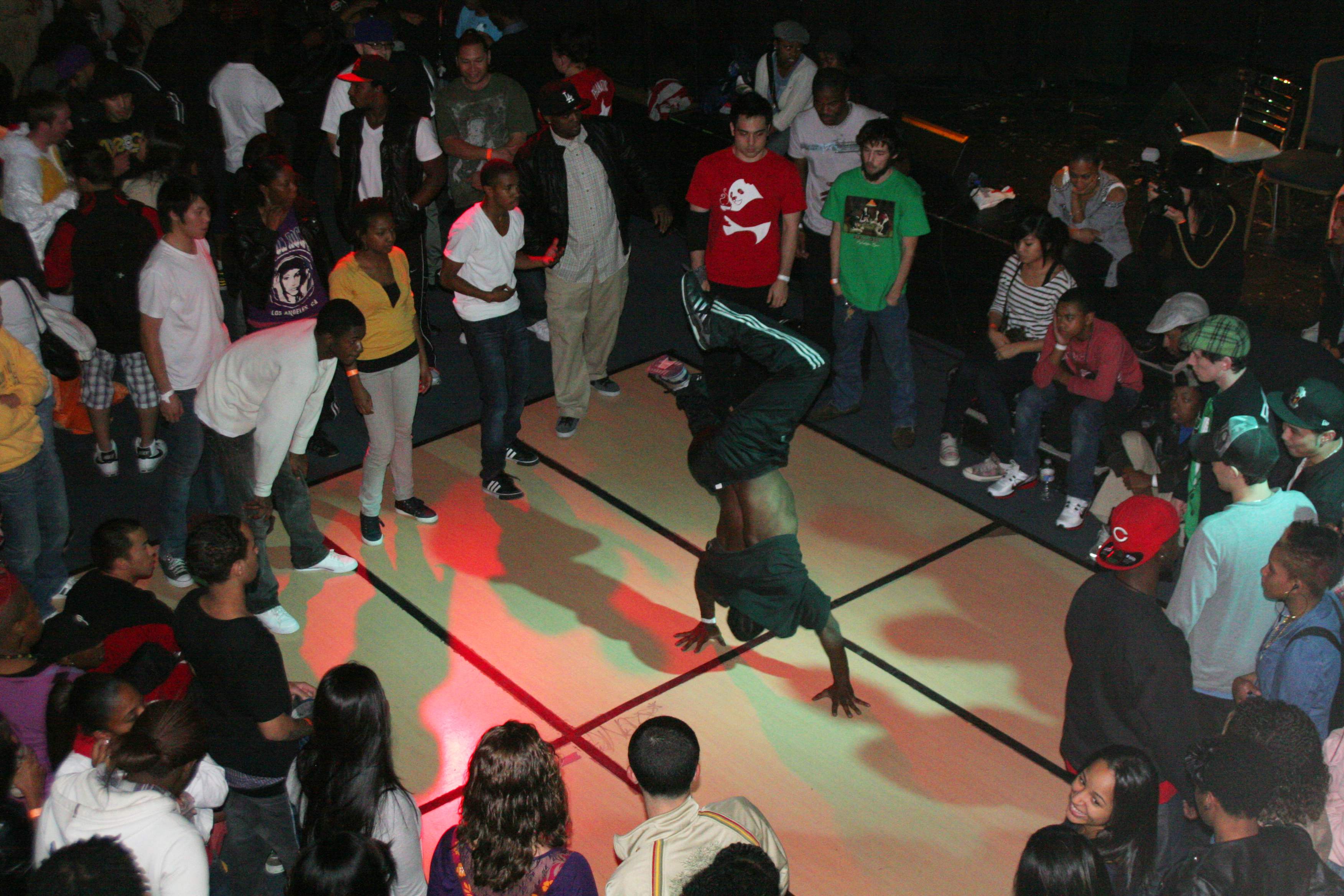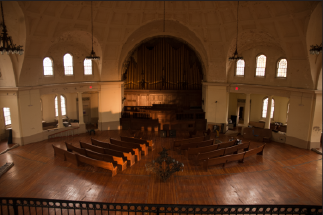ACCESSIBILITY
- Left side of the building toward the back (follow the path between Cinemark movie theater and The Rotunda): There are seven steps up to enter the venue.
- Right side of the building toward the back: There is a ramp equipped for wheelchairs, strollers, walkers, and all other assistive devices. Follow the concrete path from Walnut Street. Once inside, make a right into the hallway and then make a left at the restroom. This entrance is kept locked except during events.
- The venue has a ramp onto the stage as well, stage right. It's ADA compliant and brand new and snazzy.
- There is a single-occupancy, all-gender ADA restroom on the first floor, almost as soon as you enter from the ramp. This restroom is also equipped with a baby changing station.
- There are additional, all-gender restrooms in the basement. The restroom on the east side of the basement is equipped with three toilets. The restroom on the west side of the basement is equipped with three toilets and two urinals.
- The venue does not have central air conditioning. There are small portable units and fans but the venue is not considered air-conditioned.
GETTING HERE + PARKING
Our neighborhood is very walkable if you can do so; The streets are well lit and most sidewalks are smooth.The Rotunda is accessible via several SEPTA lines including bus routes 21, 42, and 40, the Market Frankford line (MFL) (40th and Market stop), and the 11, 13, 34, and 36 trolley lines (40th Street stop/trolley portal)
We have three bike racks.
There is metered and unmetered street parking on 40th, 41st, 42nd, Walnut, Locust, Spruce, and other nearby streets. Street parking is free on Sundays.
In addition, there is an 8-story parking garage at Acme on the northwest corner of 40th and Walnut. Hours: 5:30am-11pm. Daily rate: $18; evening & weekend rate: $15 (after 3:30pm, out by 11pm). Credit cards only. More info HERE
HISTORY
Land Acknowledgement
THE ROTUNDA’S PLACE AT PENN
The Rotunda is part of the University of Pennsylvania Facilities and Real Estate Services Arts Portfolio (FRES ARTS). FRES ARTS unites a set of cultural assets that exist along the 40th street corridor and elevate the quality of life for Penn and University City by providing access to the arts for multiple communities. The FRES ARTS portfolio includes an artist in residency program, an art gallery, studios, and performance/gathering space. These static programs are joined by annual festivals that bring tens of thousands of patrons per year to the area, enlivening the street and making the area safer and more inviting. The FRES ARTS assets support the academic mission of Penn by providing laboratories for academic experimentation and beyond the classroom learning. They support the social mission of the University by providing greater access to Penn’s real estate assets to the culture community. And the economic mission of the University is served as the arts form a strong co-tenant for the vibrant retail destination that is 40th Street.Main Room
As of June 2023, our seating capacity is 100. Current standing room capacity is 250-350 depending on the room configuration.

The Sanctuary
PLEASE NOTE: WE ARE NOT CURRENTLY ACCEPTING BOOKING INQUIRIES FOR THE SANCTUARY. WE ARE BOOKING THE MAIN ROOM/BACK SPACE ONLY AT THIS TIME.
The front space (AKA the sanctuary) is much larger than the main room, and gives the building its name. In fact, its dome is 80 feet in diameter, which is impressive in print but jaw-dropping in person. That said, artists and audiences are completely at home in this soaring architectural treasure, with its 1,500 pound Tiffany chandelier, pristine Walnut pews, and raked pine floor. We present a handful of events in this space every year, usually during citywide festivals such as Philadelphia Live Arts, Philly Fringe, Design Philadelphia, and Philadelphia International Festival of the Arts (PIFA). Artists who have performed in this grand space include: Anne-Marie Mulgrew & Dancers Co., Headlong Dance Theatre, Pig Iron, Leah Stein, Mendelssohn Club, DJ Spooky, Siobhan Davies Dance Co., EgoPo Productions, and Melissa Dunphy/Gonzales Cantata.
PLEASE NOTE: WE ARE NOT CURRENTLY ACCEPTING BOOKING INQUIRIES FOR THE SANCTUARY. WE ARE BOOKING THE MAIN ROOM/BACK SPACE ONLY AT THIS TIME.



